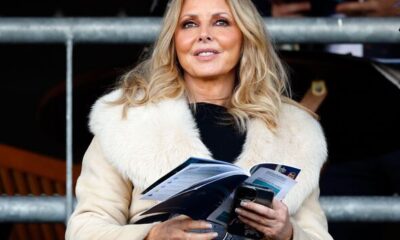Science
Astronomers Uncover ‘Greedy’ Star Consuming Twin in Cosmic Dance

An international team of astronomers has identified a white dwarf star, known as V Sagittae, that is consuming its companion star at an unprecedented rate. This discovery reveals the star’s unusual brightness, attributed to its intense feeding activity, located approximately 10,000 light-years from Earth. The findings, published in the Monthly Notices Of The Royal Astronomical Society, shed light on the dynamics of this stellar system, which has baffled scientists since its initial observation in 1902.
The research, led by Dr. Pasi Hakala from the University of Turku in Finland, describes how V Sagittae is undergoing a thermonuclear process as it absorbs mass from its larger twin. According to a spokesperson from the University of Southampton, the white dwarf is “burning unusually bright” while engaged in what can be described as a “feeding frenzy” on its companion star. The two stars are locked in a close orbit, completing a full revolution approximately every 12.3 hours, causing them to draw nearer to each other over time.
As the white dwarf continues its consumption of the companion star, the potential for a spectacular explosion looms. Professor Phil Charles from Hampshire University emphasized that the extreme brightness of V Sagittae could lead to a massive nova outburst, making it visible to the naked eye. He stated, “Our study shows that this extreme brightness is down to the white dwarf sucking the life out of its companion star, using the accreted matter to turn it into a blazing inferno.”
The team also discovered a luminous ring of gas encircling both stars, a phenomenon created by the immense energy produced by the white dwarf. Dr. Hakala explained that the white dwarf cannot consume all of the mass being transferred from its companion, resulting in this bright cosmic halo. The erratic motion of the stellar system serves as a warning sign of an imminent, violent end.
Dr. Pablo Rodriguez-Gil from Spain’s Instituto de Astrofisica de Canarias noted that the accumulation of matter on the white dwarf is likely to trigger a nova explosion in the coming years. He predicted that V Sagittae would become remarkably visible from Earth during this event. Ultimately, when the two stars collide, the resulting supernova could be so bright that it would be observable even in daylight.
This discovery not only enhances our understanding of white dwarf stars but also raises intriguing questions about the life cycles of such celestial bodies. The findings contribute to a broader understanding of stellar evolution and the dynamic interactions between binary star systems. As researchers continue to observe V Sagittae, the potential for further revelations about the cosmos remains vast and exciting.
-

 Entertainment3 months ago
Entertainment3 months agoAnn Ming Reflects on ITV’s ‘I Fought the Law’ Drama
-

 Entertainment4 months ago
Entertainment4 months agoKate Garraway Sells £2 Million Home Amid Financial Struggles
-

 Health3 months ago
Health3 months agoKatie Price Faces New Health Concerns After Cancer Symptoms Resurface
-

 Entertainment3 months ago
Entertainment3 months agoCoronation Street’s Carl Webster Faces Trouble with New Affairs
-

 Entertainment3 months ago
Entertainment3 months agoWhere is Tinder Swindler Simon Leviev? Latest Updates Revealed
-

 World2 weeks ago
World2 weeks agoBailey Announces Heartbreaking Split from Rebecca After Reunion
-

 Entertainment4 months ago
Entertainment4 months agoMarkiplier Addresses AI Controversy During Livestream Response
-

 Entertainment2 weeks ago
Entertainment2 weeks agoCoronation Street Fans React as Todd Faces Heartbreaking Choice
-

 Science1 month ago
Science1 month agoBrian Cox Addresses Claims of Alien Probe in 3I/ATLAS Discovery
-

 Health4 months ago
Health4 months agoCarol Vorderman Reflects on Health Scare and Family Support
-

 Entertainment4 months ago
Entertainment4 months agoKim Cattrall Posts Cryptic Message After HBO’s Sequel Cancellation
-

 Entertainment3 months ago
Entertainment3 months agoOlivia Attwood Opens Up About Fallout with Former Best Friend













